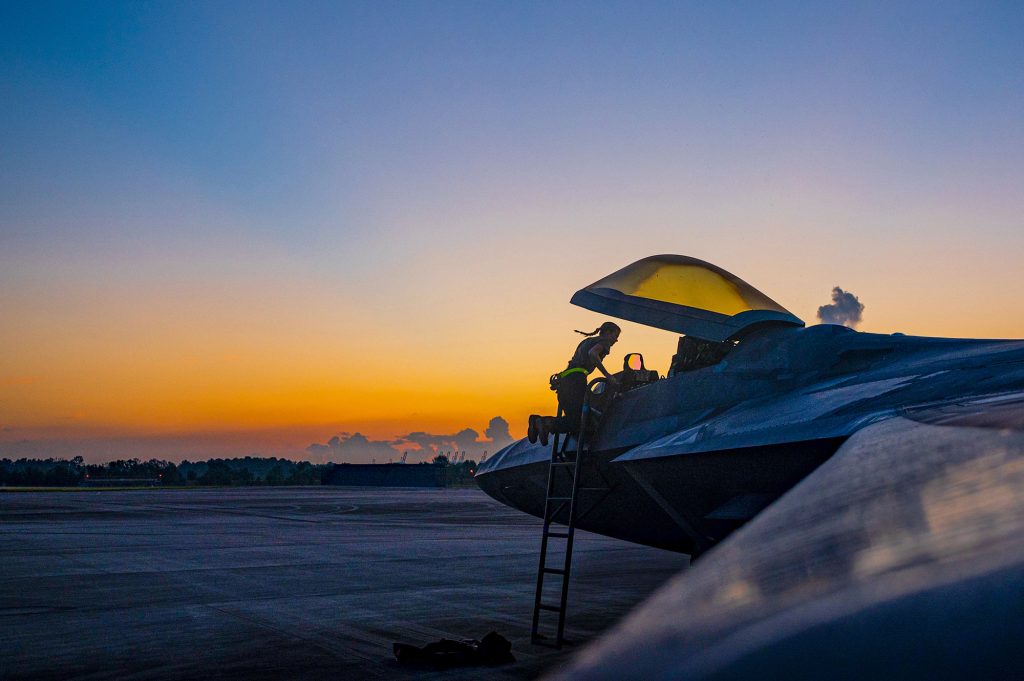A new Congressionally mandated Pentagon study of military suicide rates broken down by career field offers a rare look at comparative risk factors facing service members, but may raise more questions than it answers.
“This data is a good starting point that will now help members of Congress and their staff create more specific questions,” said Katherine Kuzminski, Deputy Director of Studies and the Director of the Military, Veterans, and Society Program at the Center for a New American Security in Washington, D.C.
“To an extent, you do have to get your arms around how big this problem is,” she told Air & Space Forces Magazine. But “now we have that, so how do we get more granular, more detailed in our requests?”
“Report on Incidence of Military Suicides by Military Job Code” arrived July 31, exactly seven months after the Dec. 31, 2023, deadline set by Congress in Section 599 of the 2023 National Defense Authorization Act. Lawmakers wanted greater insight into suicide data and directed a breakdown of military suicides since 2001 by year, military job code, and status (Active-duty, Reserve, or National Guard). It further directed DOD to compare per capita suicide rates to the overall suicide rate for each service, the wider military, and to the national suicide rate over the same period of time.
One reason Congress wanted all this can be traced to a former Air Force F-16 maintainer, who played a key role pushing Sen. Angus King (I-Maine) of the Senate Armed Services Committee to add the measure to the NDAA.
“Anecdotally we know [suicide rates are] really bad in certain career fields,” said retired Master Sgt. Chris McGhee in an in an April interview with Air & Space Forces Magazine. The report was supposed to prove that point. But after seeing the report, McGhee expressed disappointment. The report, he said, is “absolutely not in line with the explicit direction of the law as it was written.”
The report identified military jobs with the highest rates of suicide, including infantry, explosive ordnance disposal and diving, combat engineers, medical care specialists, and “not elsewhere classified” technical specialists, a catch-all term that includes mortuary affairs, firefighters, and nuclear, biological and chemical warfare specialists.
Lumped Together
But DOD did not include data back to 2001 as directed, going only back as far as January 1, 2011. And it also did not detail suicides by precise occupational specialty codes.
The report starts in 2011 because the department did not have a system for reliably tracking suicide before then, according to the report’s author, Acting Undersecretary of Defense for Personnel and Readiness Ashish Vazirani. But a 2010 DOD study of military suicides from 2001 to 2009 would appear to show otherwise, a point first noted by Military.com.

Lumping together occupational specialties into broader career fields may also have diluted the insights that could be gleaned from studying the trends in specific career fields.
For example, McGhee noted, “aircraft and aircraft related” combines categories ranging from “aircraft engines,” “aircraft structures” to “aircraft launch equipment,” but it does not specify the precise jobs represented in those groups, such as avionics, propulsion, crew chiefs, and ground equipment.
McGhee wanted to see specific rates for specific Air Force Specialty Codes. The report might have listed something like the format below, McGhee suggested:
- 2A3X3 (The Air Force specialty code for tactical aircraft maintenance) overall rate: 29 out of 100,000 people
- 2A3X3 Active Duty rate: 32
- 2A3X3 Air National Guard rate: 28
- 2A3X3 Air Force Reserve rate: 27
Instead, the report does not distinguish exact specialties or between types of aircraft, such as helicopter, fighter, airlift, drones, or other types that vary wildly in terms of operational tempo and spare parts availability. Another example is the aggregated total for Special Forces, conventional infantry, and military training instructors, fields that entail many different skills and challenges.
The Pentagon cited DOD regulations for its decision, because of the small numbers in data sets. “Military service component rates will not be calculated when the number of suicides is less than 20,” as it could invite statistical instability. “Instead, only the number of suicides will be reported.”
This logic is also used in DOD’s annual suicide reports, which lists the number of suicide deaths in subcategories, such as 17-19 year-old Active-duty troops or National Guard dependents. Rates are not calculated, however.
Still, this latest report could have provided totals by occupational specialty, but officials chose not to. That differs from the 2010 study, which did list suicides for each year by service, as well as aggregated rates for all eight years, even when that number was just one person.
Kuzminski said the new report does not provide sufficient context. “If there’s 36 Special Forces deaths by suicide, is that 36 out of 40, or is that 36 out of 10,000?” she asked. “The way it’s lumped together, it’s difficult to get a sense of what [the data] truly means.”
Unlike the 2010 study, the report also does not distinguish among similar career fields in different services, such as Army and Marine Corps infantry or Navy and Air Force tactical aircraft maintainers. Not doing so makes it impossible to see whether rates vary by service, which could lead to better understanding.
“That’s why it really matters how the law is written,” Kuzminski said. “They didn’t ask for it by service, so it wasn’t presented by service.”

Time Warp
Another aspect missing in the report are clear breakdowns by year. The report explained the omission by saying “because doing so would not provide sufficient data to calculate a suicide rate for the military occupations. … [I]t is difficult to distinguish between random fluctuation/natural variation (“noise”) and true change (“signal”) with a high degree of confidence,” the Pentagon wrote.
But McGhee questions that logic. “The law required certain data, not DOD interpretations and solutions,” he said. “If DOD wanted to provide their own interpretation for context, there is no issue. But to supplant their interpretation as data, in violation of the law is problematic.”
By not distinguishing the data by year, the spikes and declines that would otherwise be apparent are obscured, he said. Those variations matter. An Army Times investigation this spring found suicide rates among tank brigades in recent years were higher than in other combat units, due largely to unsustainable operations tempo, under-manning, and spare parts backlogs.
Air Force data acquired by McGhee through a Freedom of Information Act request reported in 2016 that the suicide rate rose among Active duty aircraft maintainers rose from 14.7 per 100,000 in 2013 to 30.5 per 100,000 in 2014. Meanwhile, the average Active duty suicide rate rose less significantly from 14.5 to 19.
That same time period overlaps with the 2014 Air Force drawdown, when 19,833 Airmen left the service, among them at least 1,392 maintainers, widening a pre-existing shortage of more than 2,500 maintainers, Air Fore Times reported at the time. The drawdown affected experienced 5-level and 7-level maintainers, leaving inexperienced maintainers to make up those deficits.
Next Steps
The NDAA specified for the Pentagon to provide an interim briefing with preliminary findings by June, 2023, which might have presented the DOD a chance to review its limitations with Congress, but the report did not mention if such a briefing ever occurred.
In the future, Kuzminski said the individual services may be better positioned first to provide the kind of data that would generate more useful insights, and then to implement any new policy.
“It may actually be more effective, granular, and nuanced if the responsibility was to each of the services as opposed to DoD,” she said. “We need the data to know what the trends are, but in order to take action, that’s going to be at the service level.”
Future legislation may call for more data. A draft of the Senate version of the 2025 NDAA features most of the same language from the 2023 bill. A few new bits also written by Sen. King would extend the reporting to “the number of suicides, attempted suicides, or known cases of suicidal ideation [emphasis added].”
Service members and veterans who are in crisis or having thoughts of suicide, and those who know a service member or veteran in crisis, can call the Veterans/Military Crisis Line for confidential support available 24 hours a day, seven days a week, 365 days a year. Call 988 and press 1; text 988; or chat online at VeteransCrisisLine.net/Chat.


